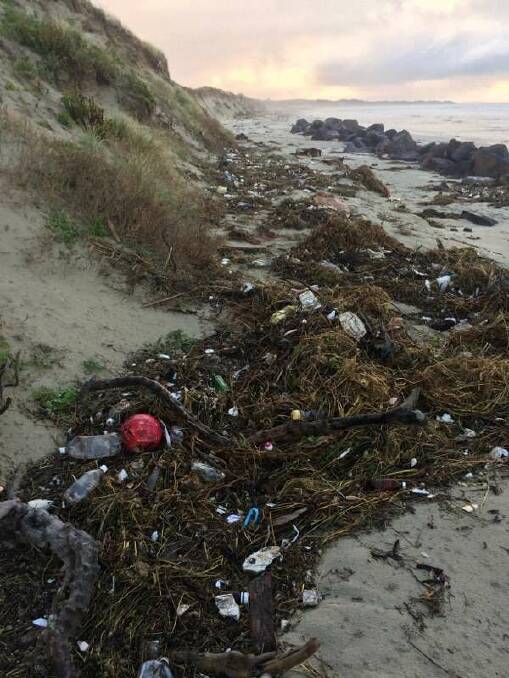
A tourism jewel of the south-west or an environmental disaster? Port Fairy's East Beach is facing a huge challenge and it will take more than Band-Aid solutions to fix things, argues local doctor IAN SUTHERLAND.
Subscribe now for unlimited access.
$0/
(min cost $0)
or signup to continue reading
It has been predicted for the past decade or more but now it has happened.
Last Wednesday night my daughter and I were walking along Port Fairy’s celebrated East Beach when we were confronted by one fridge, a freezer, a washing machine, car tyres and parts, toys, batteries, rope, cable, bottles, metal, endless plastic and even syringes strewn along the sand.
It has to be seen to be believed. I had been something of a sceptic but no longer, having witnessed the accelerated pace of erosion along the northern end of one of the finest natural assets the south-west has to offer.
With regard to the erosion issue debate there has been much confusion and misunderstanding about two tip sites in the dunes, one far more concerning than the other.
Firstly, there is the old ‘‘shit tip” at the southern end which was breached in 2013 with exposure of old night cans, glass and building matter. This is a relatively small-volume dump, but has still caused concern.
Exposure of debris after that initial breach resulted in reduced access to that part of the beach.
Then there is the much larger, old town municipal tip further north that was used for about 40 years until the ’80s.
This contains about 10,000 cubic metres of general town and household rubbish, much of it hazardous.
This one has just recently been breached at its northern-most tip with exposure of decades-old waste. The entire edge of the tip’s boundary is now outlined with star pickets where its rim has been delineated by a back hoe.
If this old dump site is further compromised by a large storm this winter, the resulting spillage of debris and rubbish and environmental pollution could have a calamitous impact on Port Fairy.
Such an event could have staggering consequences for many commercial aspects of our prosperous little town, ironically not long ago voted the world’s most liveable community.
The potential for a large-scale environmental disaster is real, given the toxic nature of much of the debris.
A worsening of the situation could lead to a closure of the entire East Beach and much of the beach all the way to Warrnambool. And once heavy erosion of the area gets a grip, it will be almost impossible to stop.
If the Moyne Shire council wants to protect the tip — as it is attempting to do by strengthening a rock barrier — what will we end up with?
The most likely outcome would be a very expensive rock-wall barrier that will need a lot of ongoing maintenance and support.
Sadly, the truth is if we continue with this temporary solution all we will really finish up with will be a costly eyesore — an island comprising 10,000 cubic metres of landfill. A ‘‘rubbish island’’ in effect.
Hardly something to protect or something to be proud of saving.
We should be courageous enough to admit that the town fathers got it horribly wrong when they allowed this stuff to be dumped there in the first place.
Surely, the only sensible option is to urgently remove all the rubbish before it is too late.
Once it is gone there will be no further concerns about ‘‘unnatural pollution relating to a relatively natural erosive process’’, albeit accelerated by global warming.
Towards the end of this century it is feasible that the ocean will erode through the dunes and join with Belfast Loch.
Moving the rubbish might accelerate this process, but overall it would be an interesting environmental and future planning project.
Also, it could be one that arguably would be much more likely to gain government funding and environmental interest than what we are presently proposing — a protective rock-wall around a 50-year-old garbage tip.
I encourage the residents of Port Fairy to have a look at this mess because seeing is believing.
Ian Sutherland is a GP who lives and works in Port Fairy

